finger rests/fuclcrum and periodontal probes
1/39
There's no tags or description
Looks like no tags are added yet.
Name | Mastery | Learn | Test | Matching | Spaced |
|---|
No study sessions yet.
40 Terms
fulcrum __________ teeth away from the tooth being worked on
- established out of the line of fire
- never rests directly above the tooth surface being worked on
A) 1 to 3
B) 1 to 4
C) 1 to 5
D) 2 to 4
B) 1 to 4
finger rest on __________
A) incisal edge or occlusal surface, occlusalfacial line angle, occlusolingual linen angle
B) buccal surface, facial surface, labial surface, occlusal facial line angle
A) incisal edge or occlusal surface, occlusalfacial line angle, occlusolingual linen angle
- palm down
A) hand position mandibular position
B) hand position maxillary position
A) hand position mandibular position
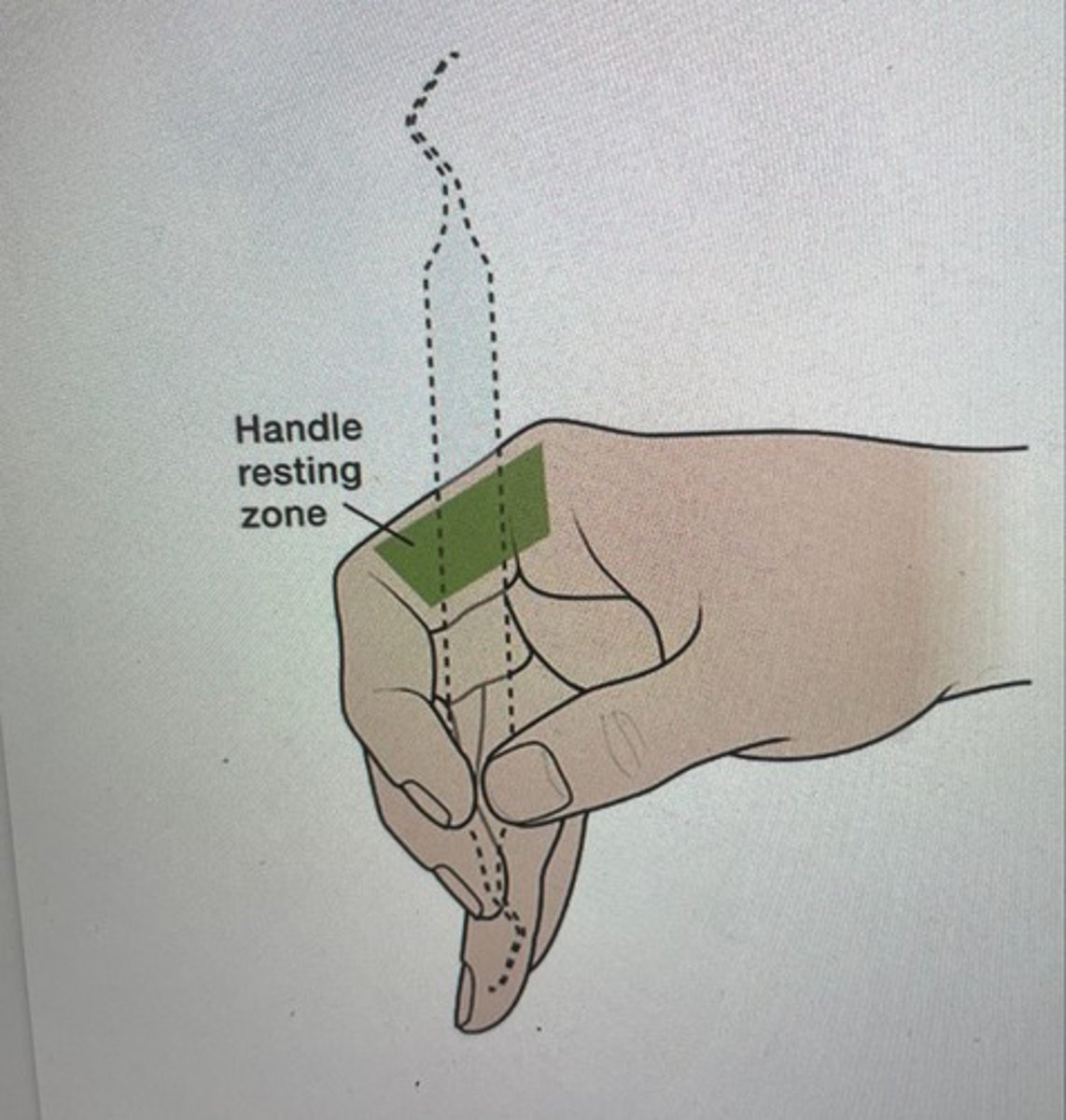
mandibular
- palm up
A) hand position mandibular position
B) hand position maxillary position
B) hand position maxillary position
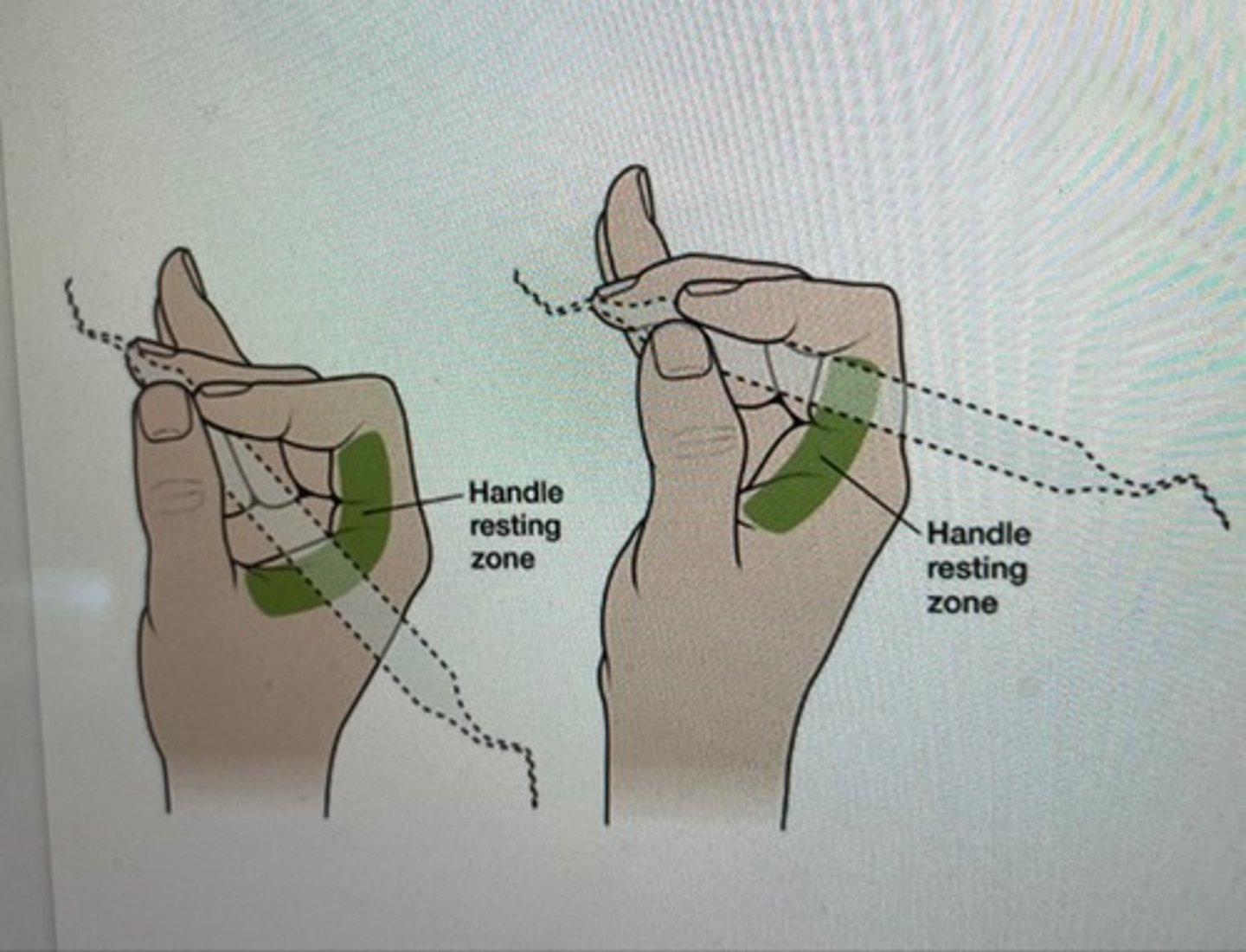
maxillary
Assume the clock position for the treatment area
A) me
B) my patient
C) my equipment
D) my dominant hand
A) me
establish patient chair and head position
A) me
B) my patient
C) my equipment
D) my finger rest
B) my patient
Adjust the unit light. Pause and self-check the clinician, the patient, and equipment position.
A) me
B) my patient
C) my equipment
D) my finger rest
C) my equipment
Grasp the mirror and establish a finger rest with my __________ hand
A) dominant hand
B) non dominant hand
B) non dominant hand
Grasp the instrument. Pause to evaluate my finger placement in the grasp.
A) dominant hand
B) non dominant hand
A) dominant hand
establish a _________ near the first tooth to be treated
A) me
B) my patient
C) my equipment
D) my finger rest
D) my finger rest
sequence for establishing a finger rest
A) my patient, me, my equipment, my non dominant hand, my dominant hand, my finger rest
B) me, my patient, my equipment, my non dominant hand, my dominant hand, my finger rest
C) me, my patient, my equipment, my finger rest, my non dominant hand, my dominant hand
D) my patient, me, my equipment ,my finger rest, my non dominant hand, my dominant hand,
B) me, my patient, my equipment, my non dominant hand, my dominant hand, my finger rest
measure sulcus and pocket depth
use of a ____________________
A) periodontal probe
B) explorer
C) assessment instrument
D) calculus removing instrument
A) periodontal probe
measure clinical attachment levels
A) periodontal probe
B) explorer
C) assessment instrument
D) calculus removing instrument
A) periodontal probe
determine the width of the attached gingiva
A) periodontal probe
B) explorer
C) assessment instrument
D) calculus removing instrument
A) periodontal probe
assess for the presence of bleeding
A) periodontal probe
B) explorer
C) assessment instrument
D) calculus removing instrument
A) periodontal probe
measure the size of oral lesions
A) periodontal probe
B) explorer
C) assessment instrument
D) calculus removing instrument
A) periodontal probe
measure longitudinal response of periodontium to treatment
A) periodontal probe
B) explorer
C) assessment instrument
D) calculus removing instrument
A) periodontal probe
do all periodontal probes have the same pattern of millimeter markings ?
A) yes
B) no
B) no
the tissue that forms the base of the sulcus
A) junctional epithelium
B) gingival margin
C) interdental gingiva
D) contact area
A) junctional epithelium
part of the gingiva that is tightly connected to the cementum on the root and to the connective tissue cover of the alveolar bone
A) gingival sulcus
B) free gingival groove
C) gingival margin
D) attached gingiva
D) attached gingiva
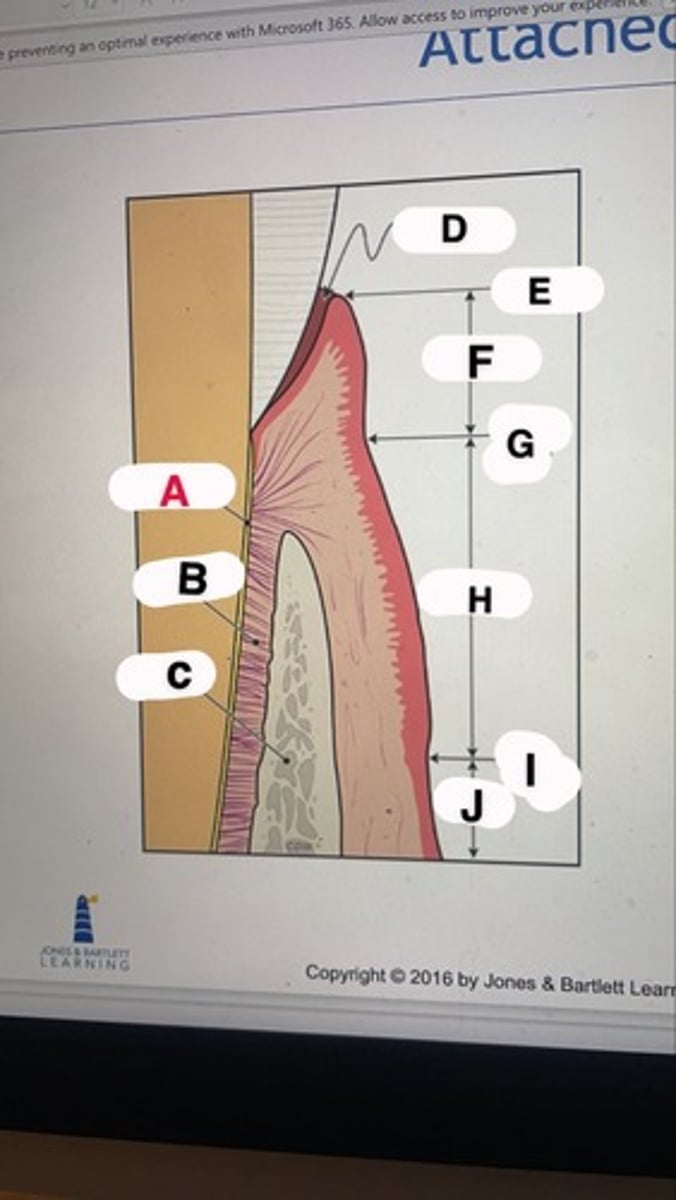
cementum
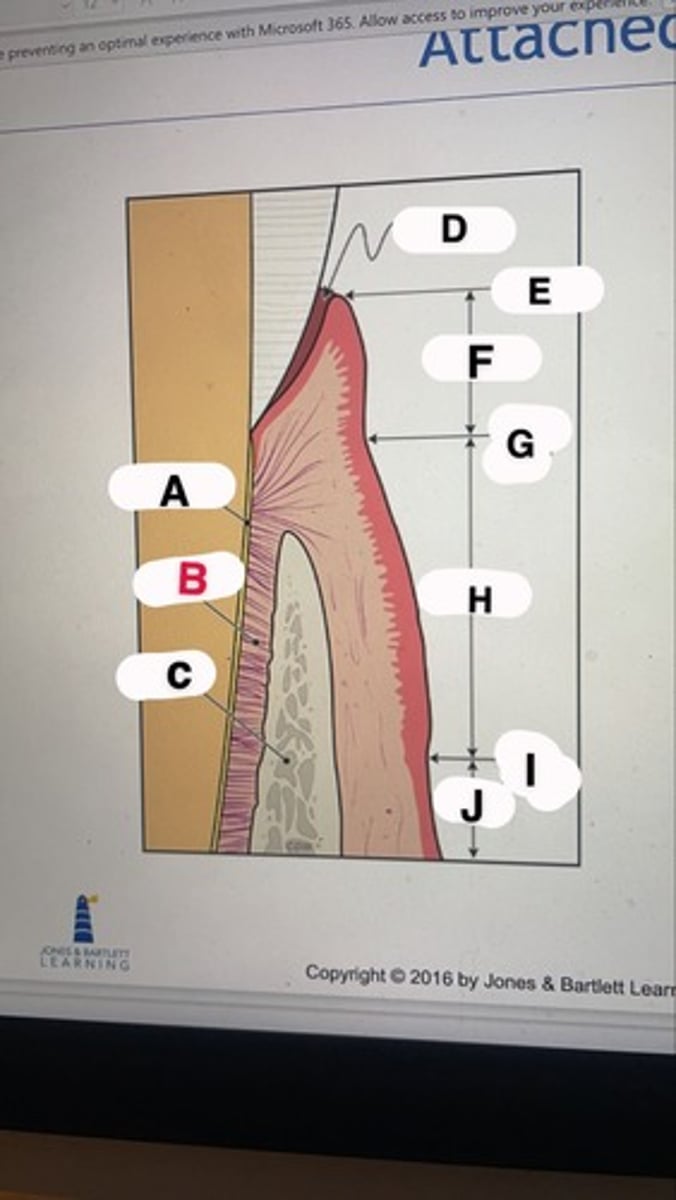
periodontal ligament
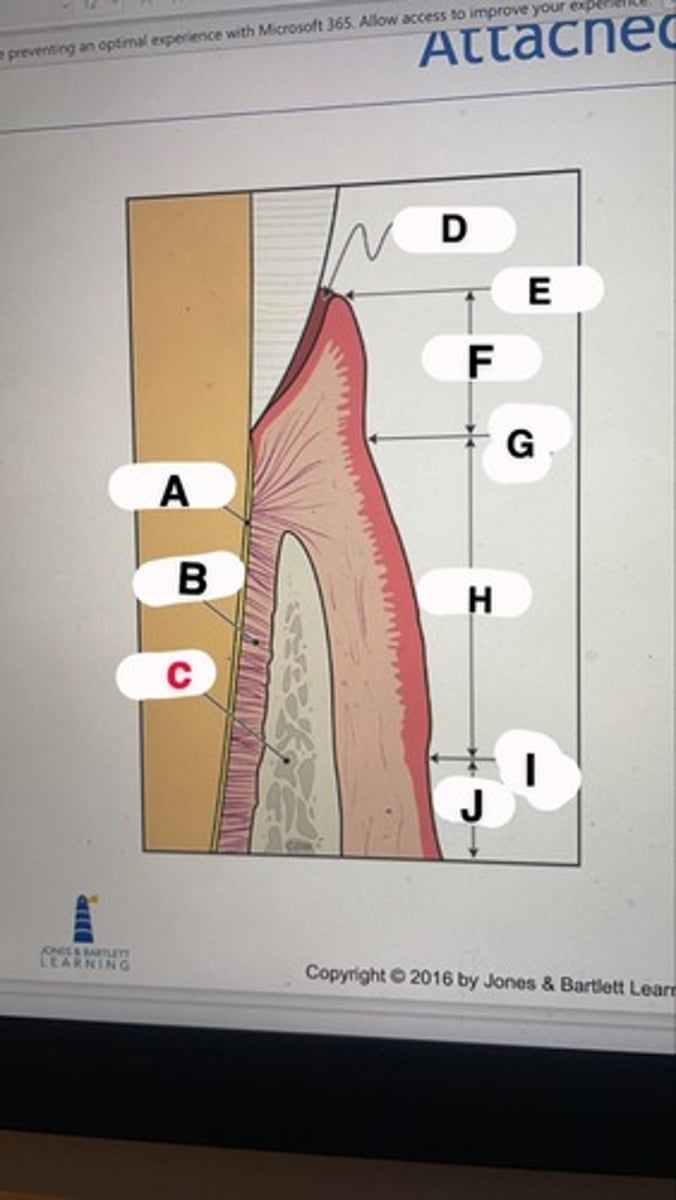
alveolar bone
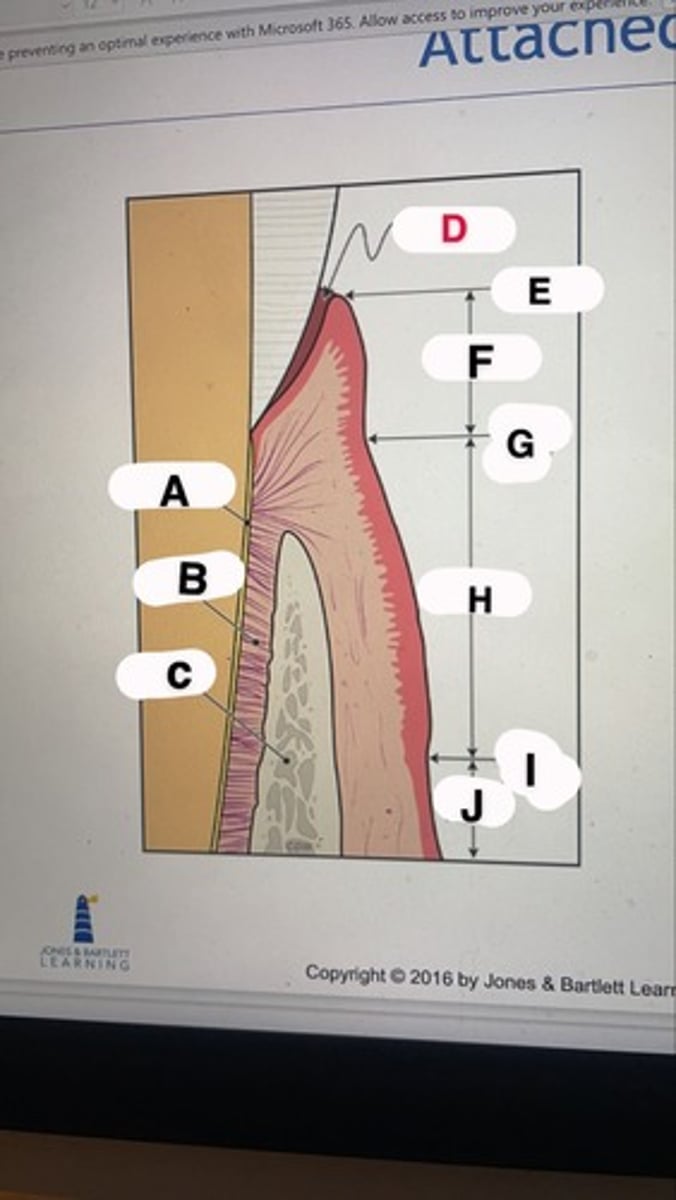
gingival sulcus
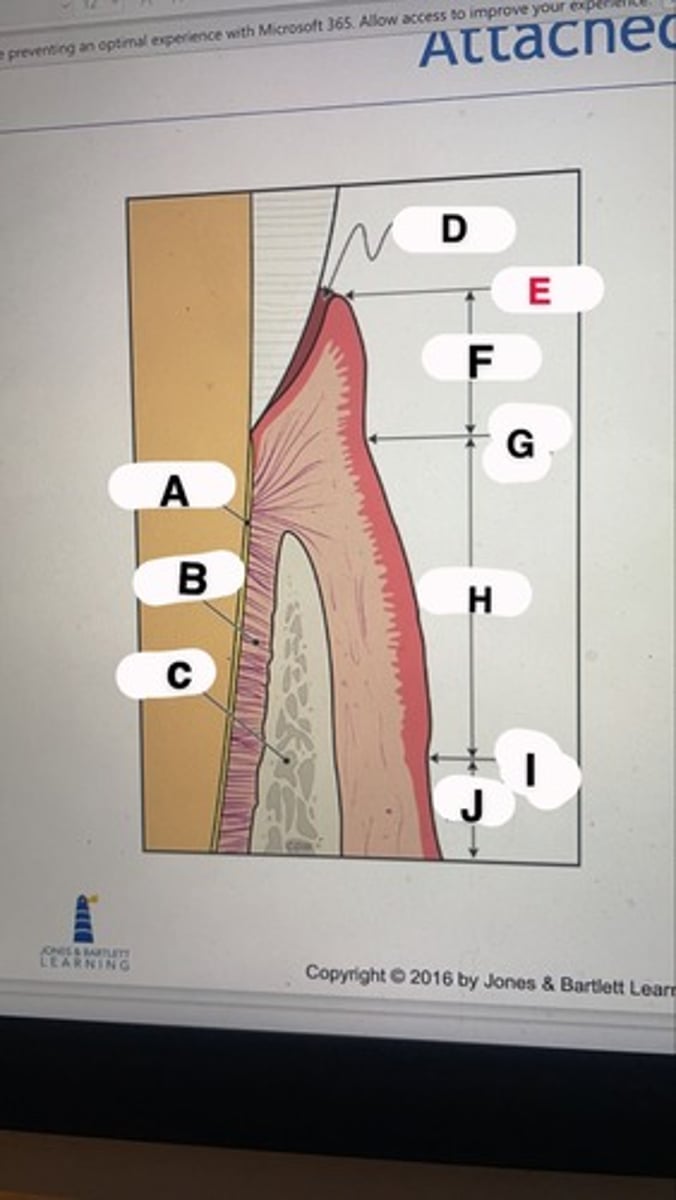
gingival margin
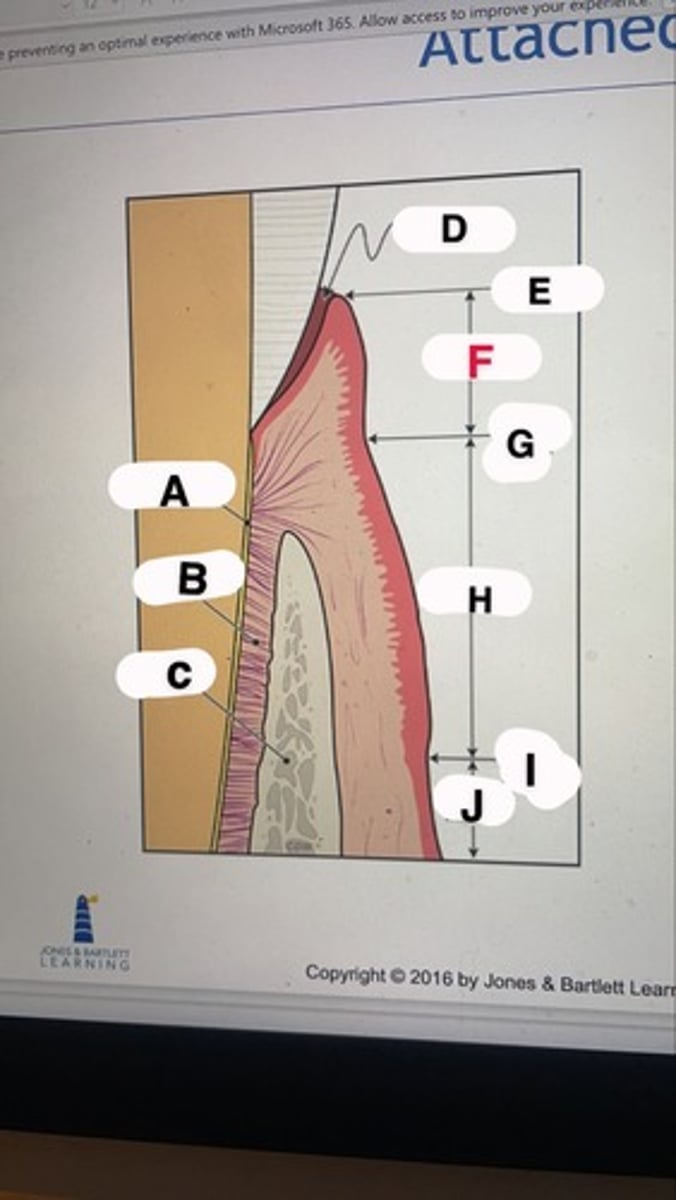
free gingiva
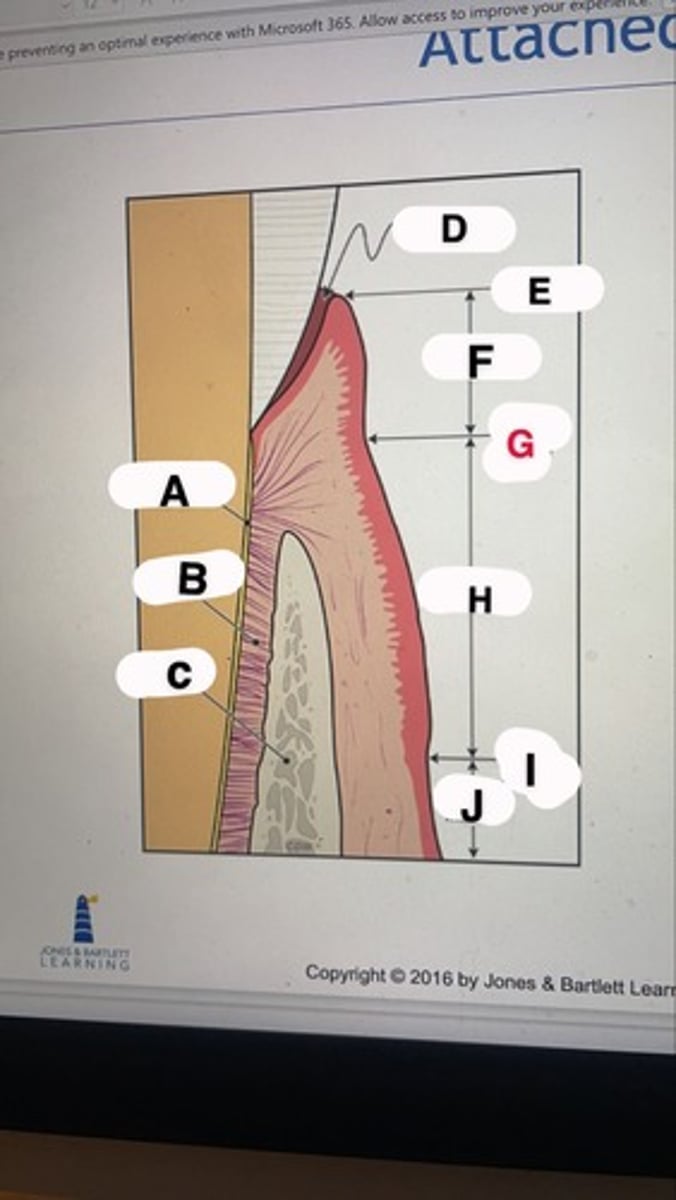
free gingival groove
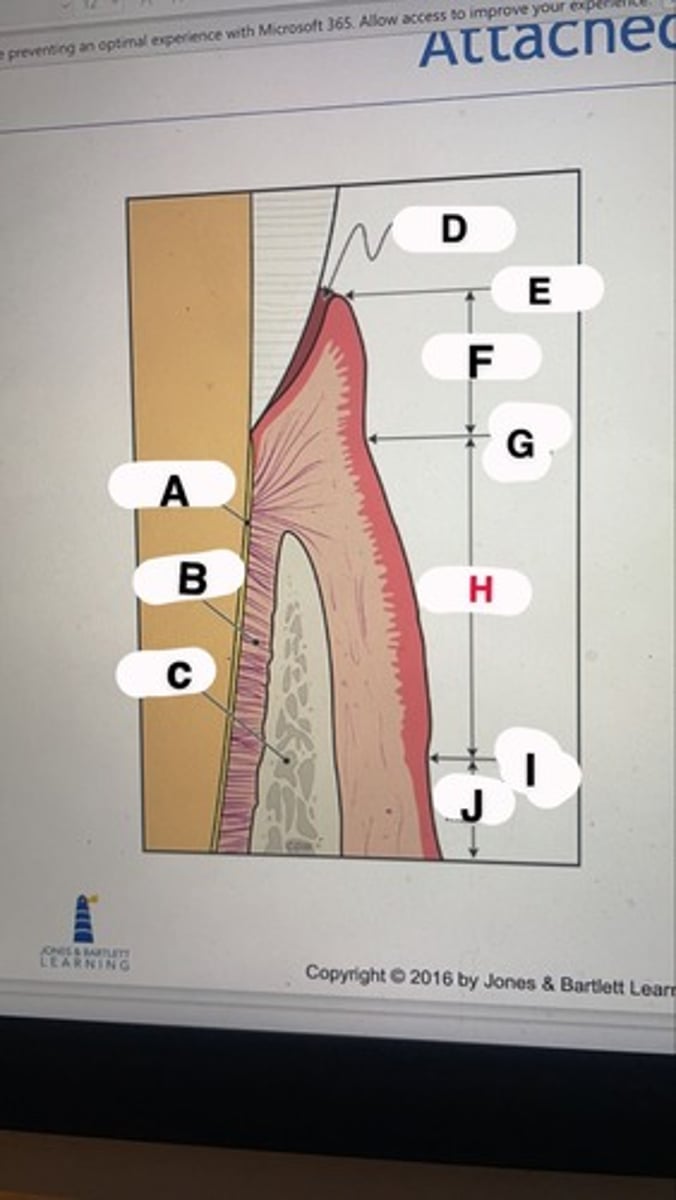
attached gingiva
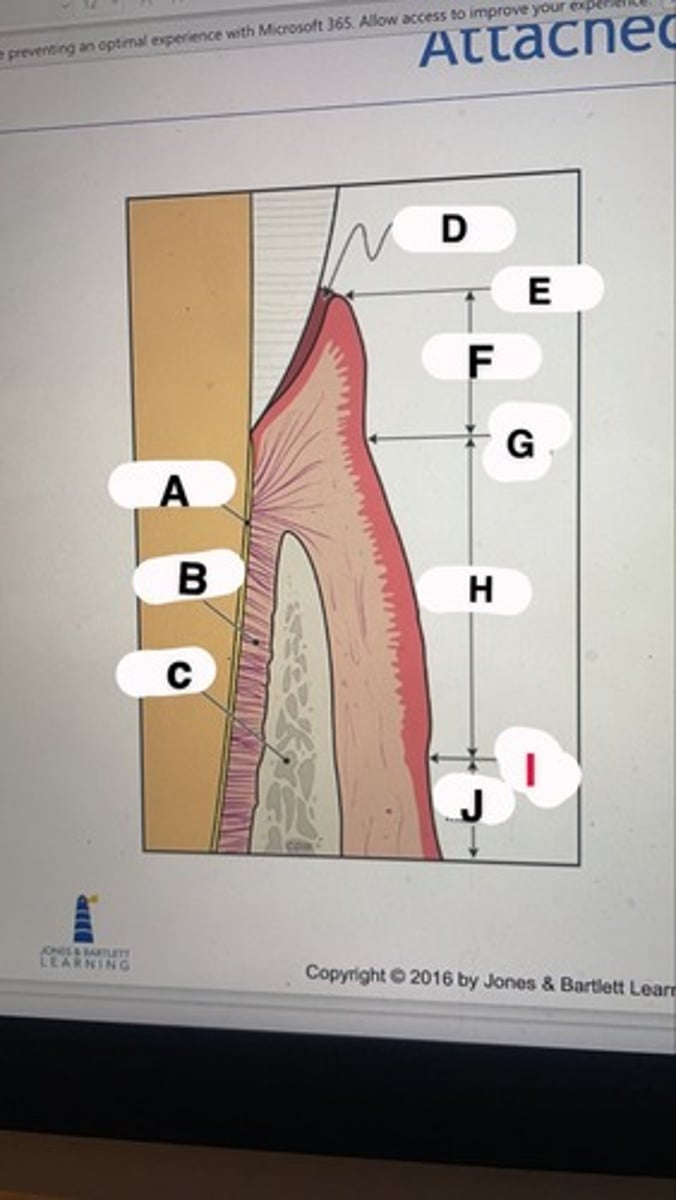
mucogingival junction
is deepening of gingival sulcus caused by detachment of coronal portion of junctional epithelium and swelling of tissue
A) gingival pocket
B) periodontal pocket
A) gingival pocket
forms from apical migration of the junctional epithelium and destruction of periodontal fibers and bone
A) gingival pocket
B) periodontal pocket
B) periodontal pocket
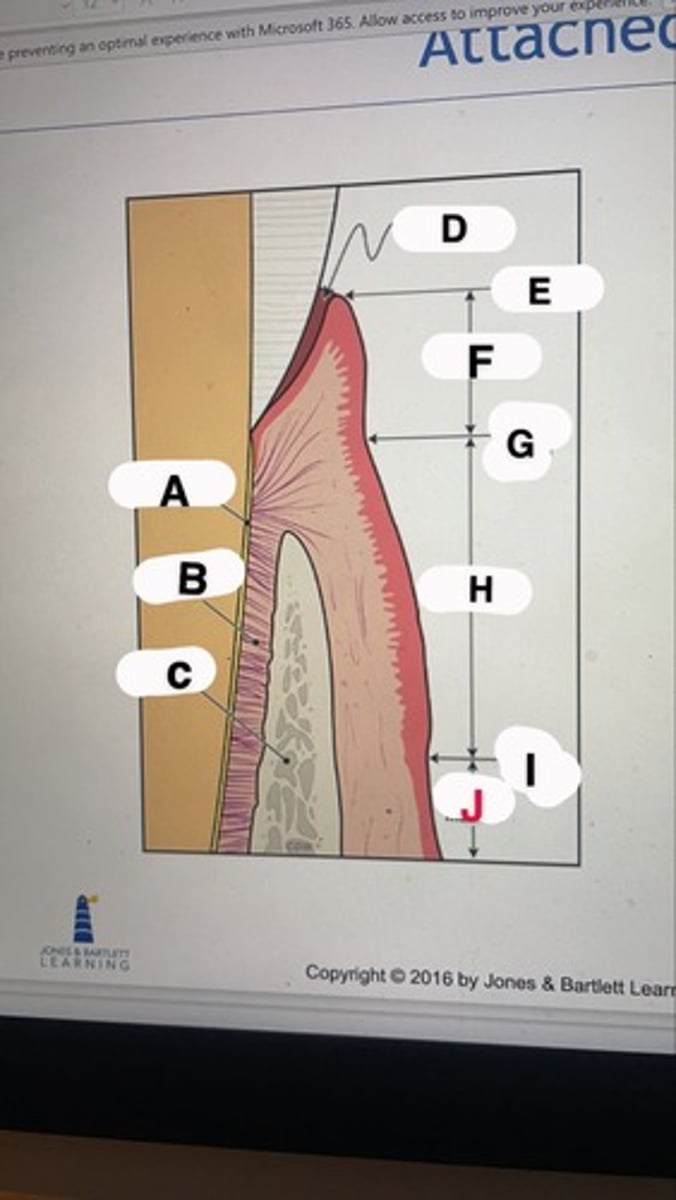
alveolar mucosa
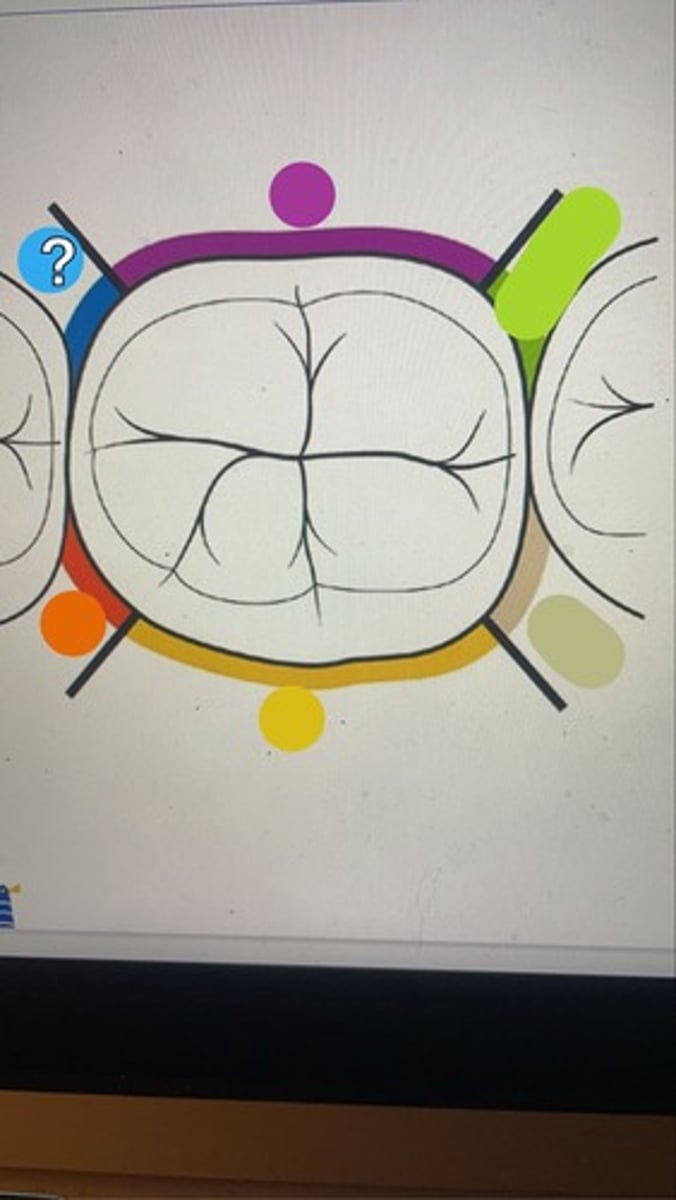
4
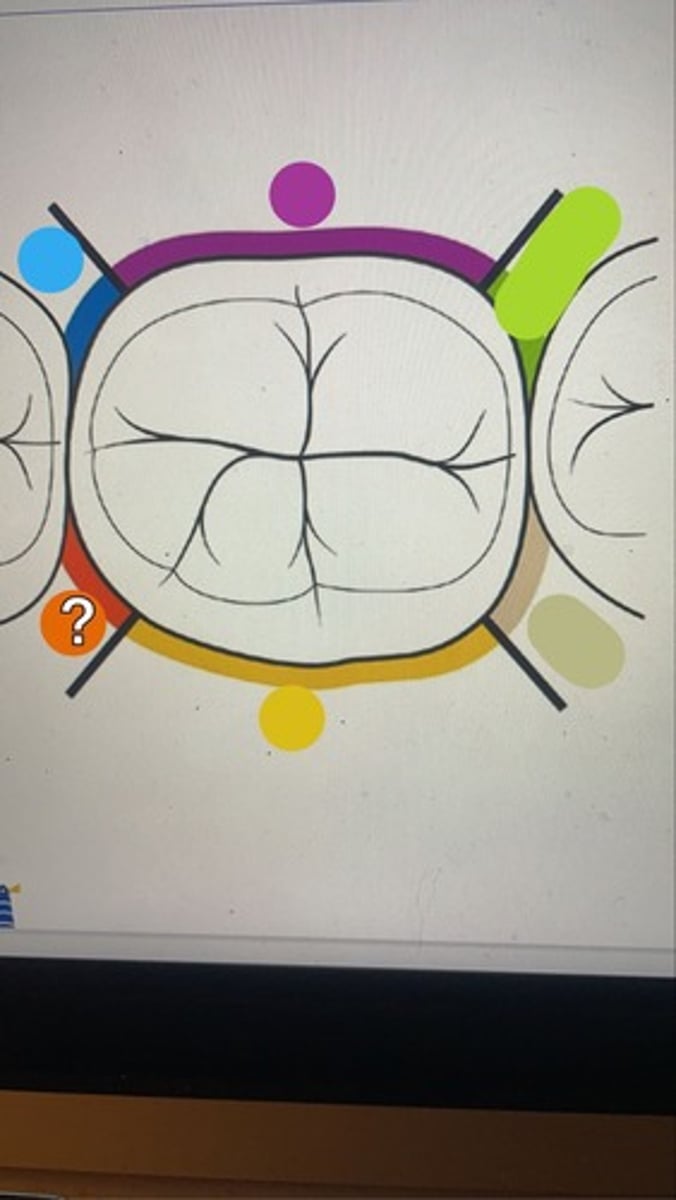
1
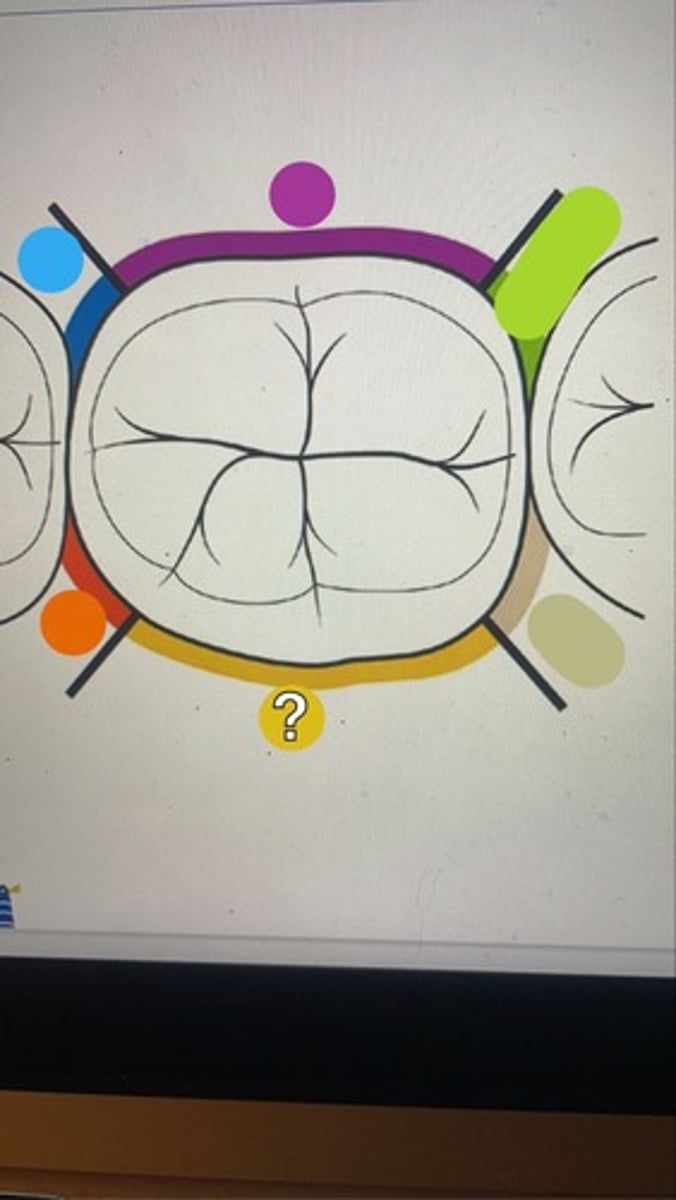
2
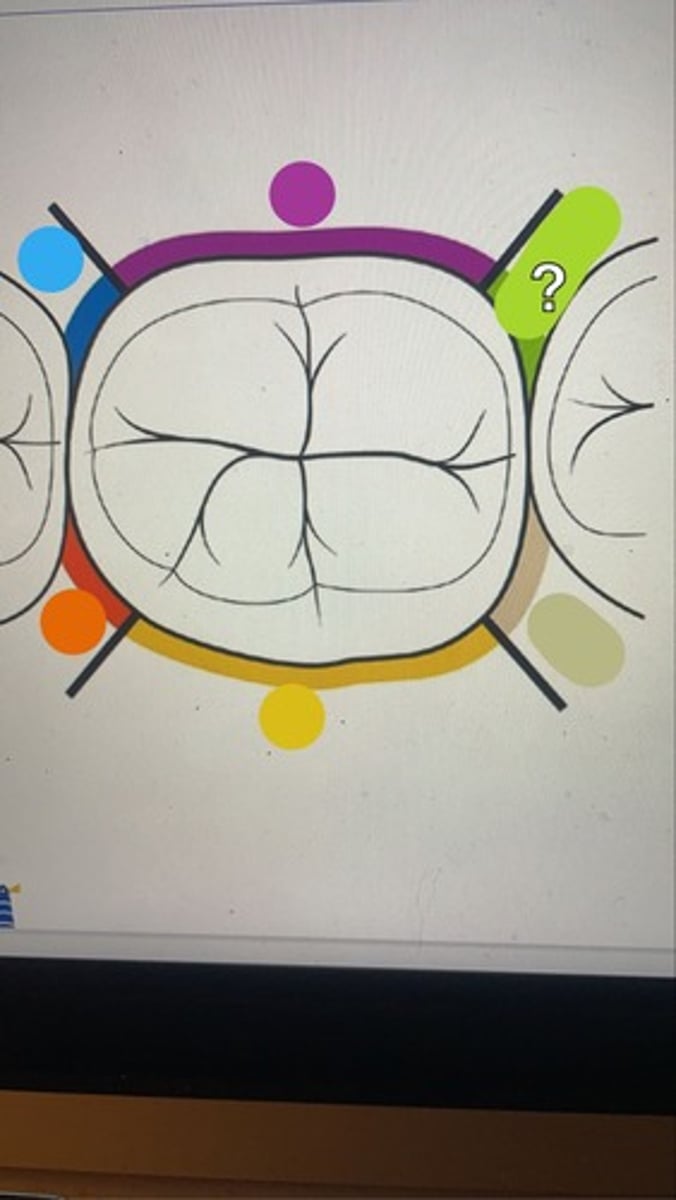
6
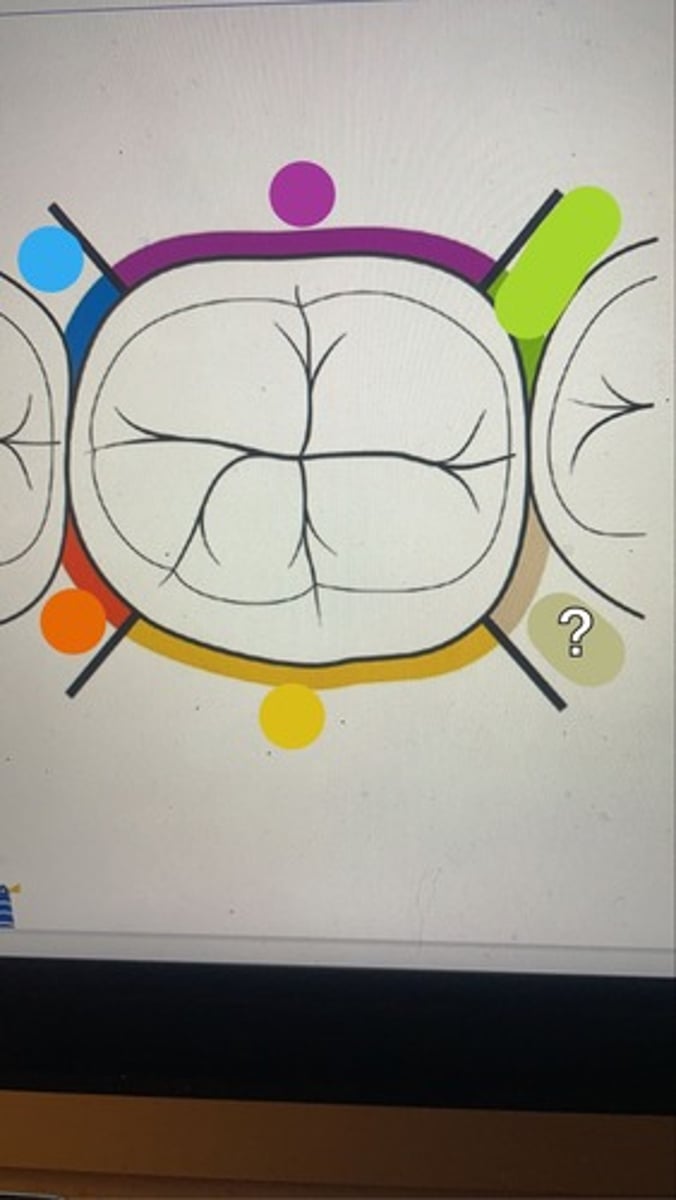
3
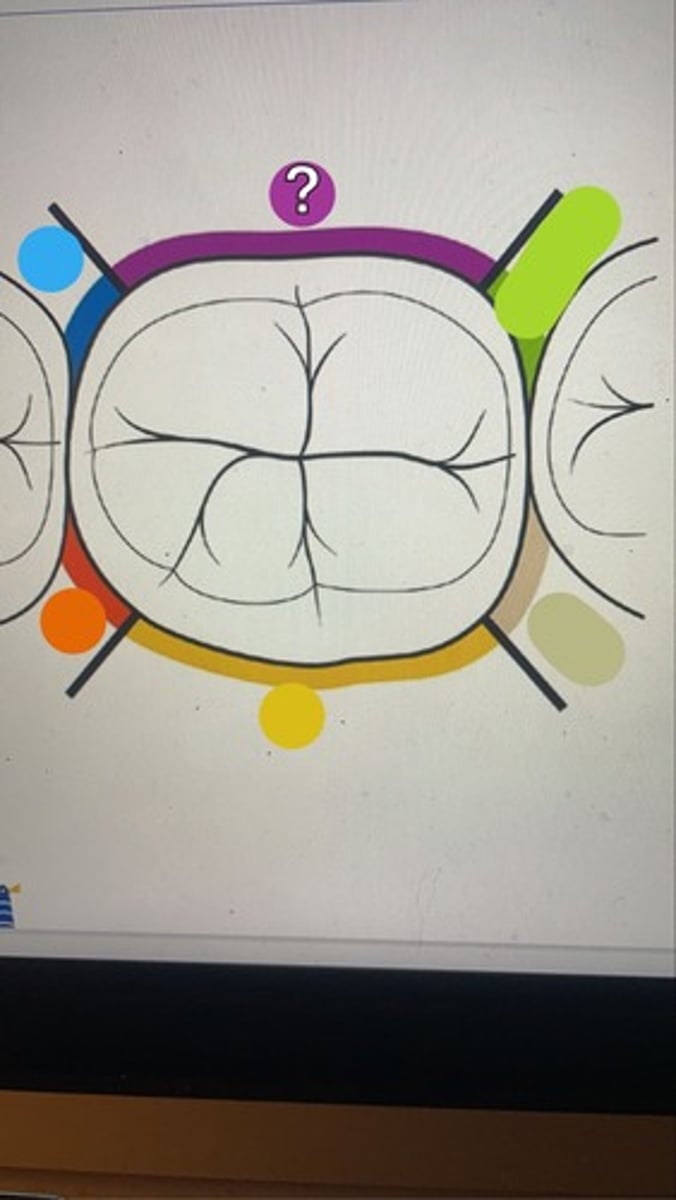
5